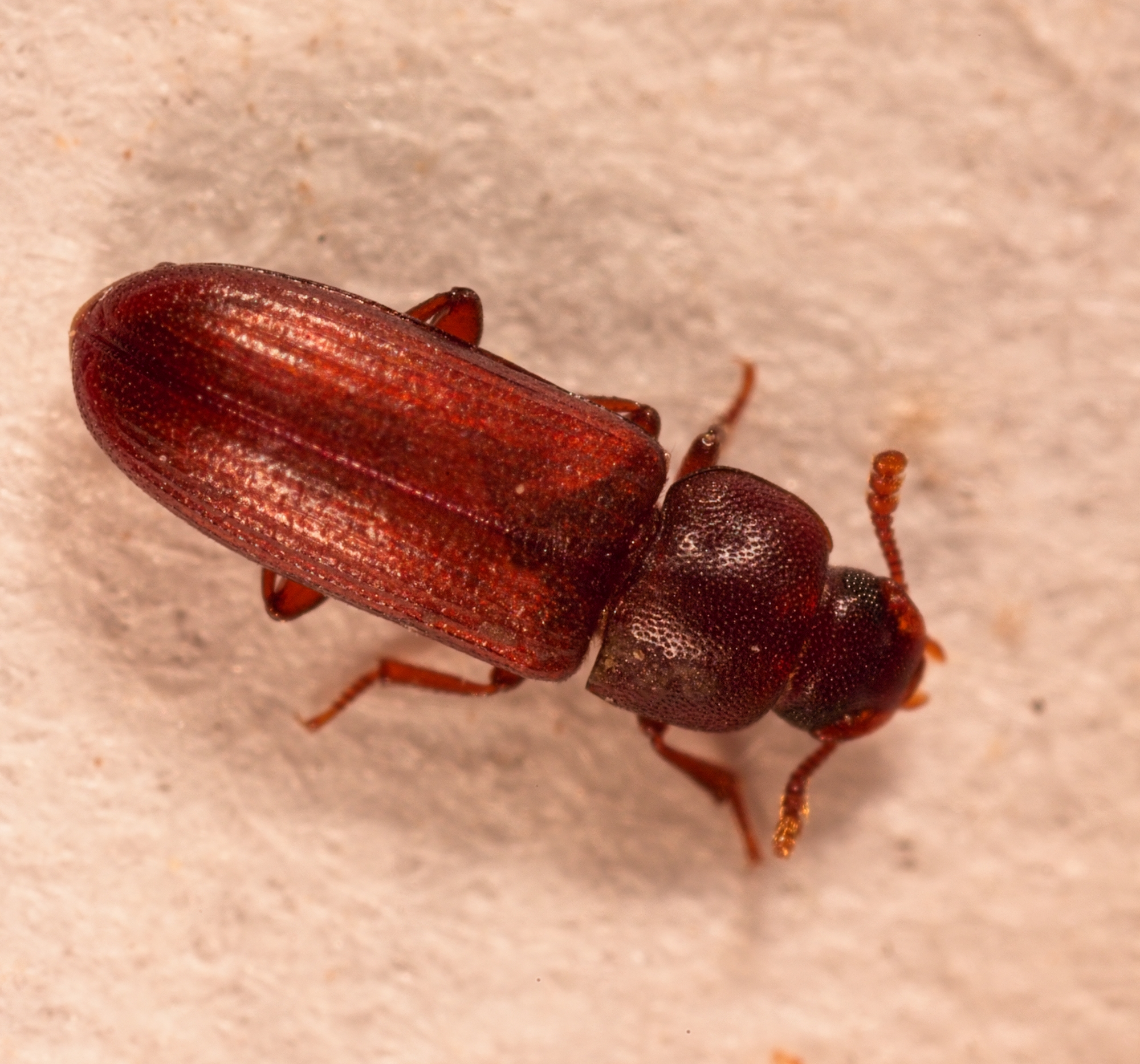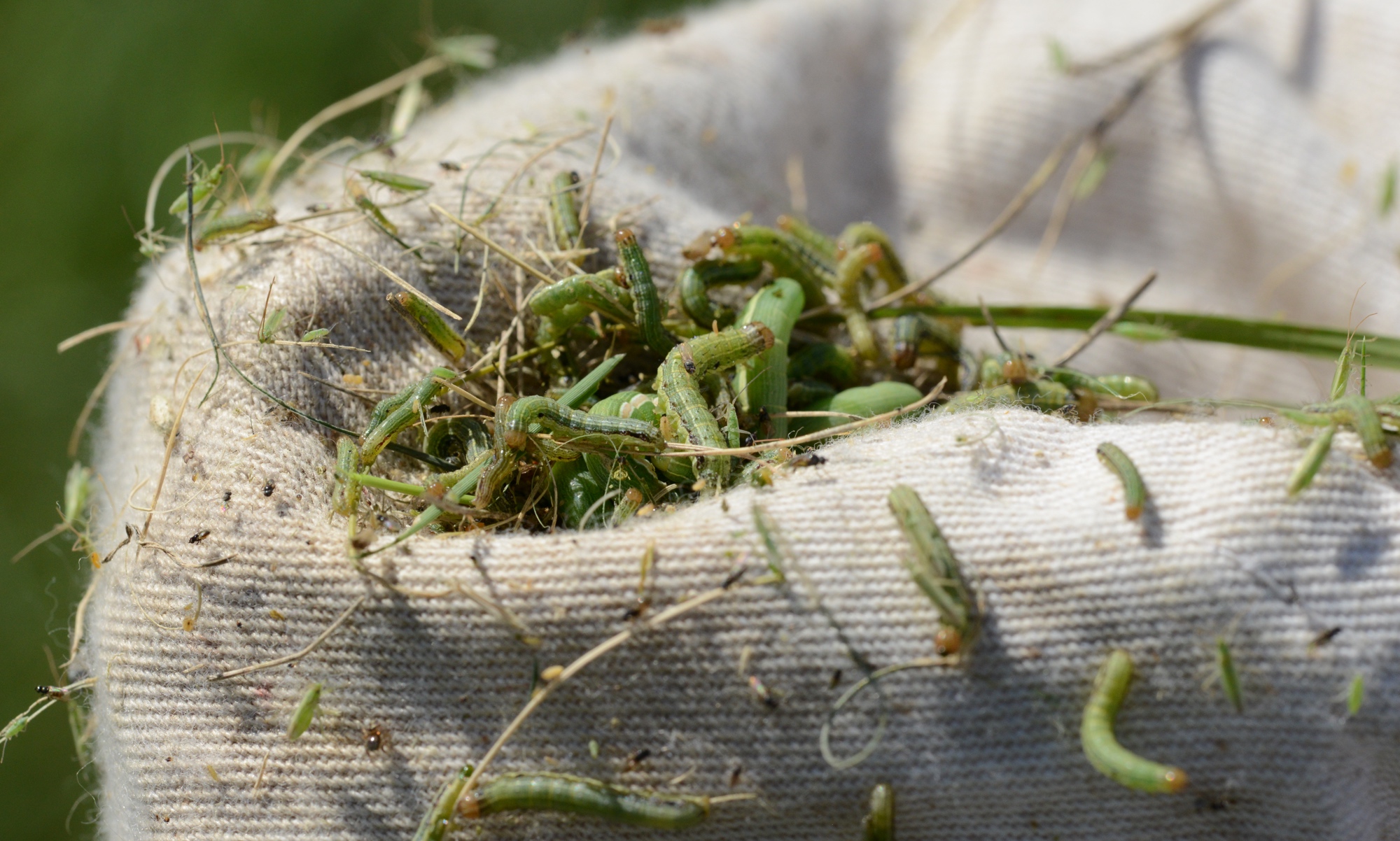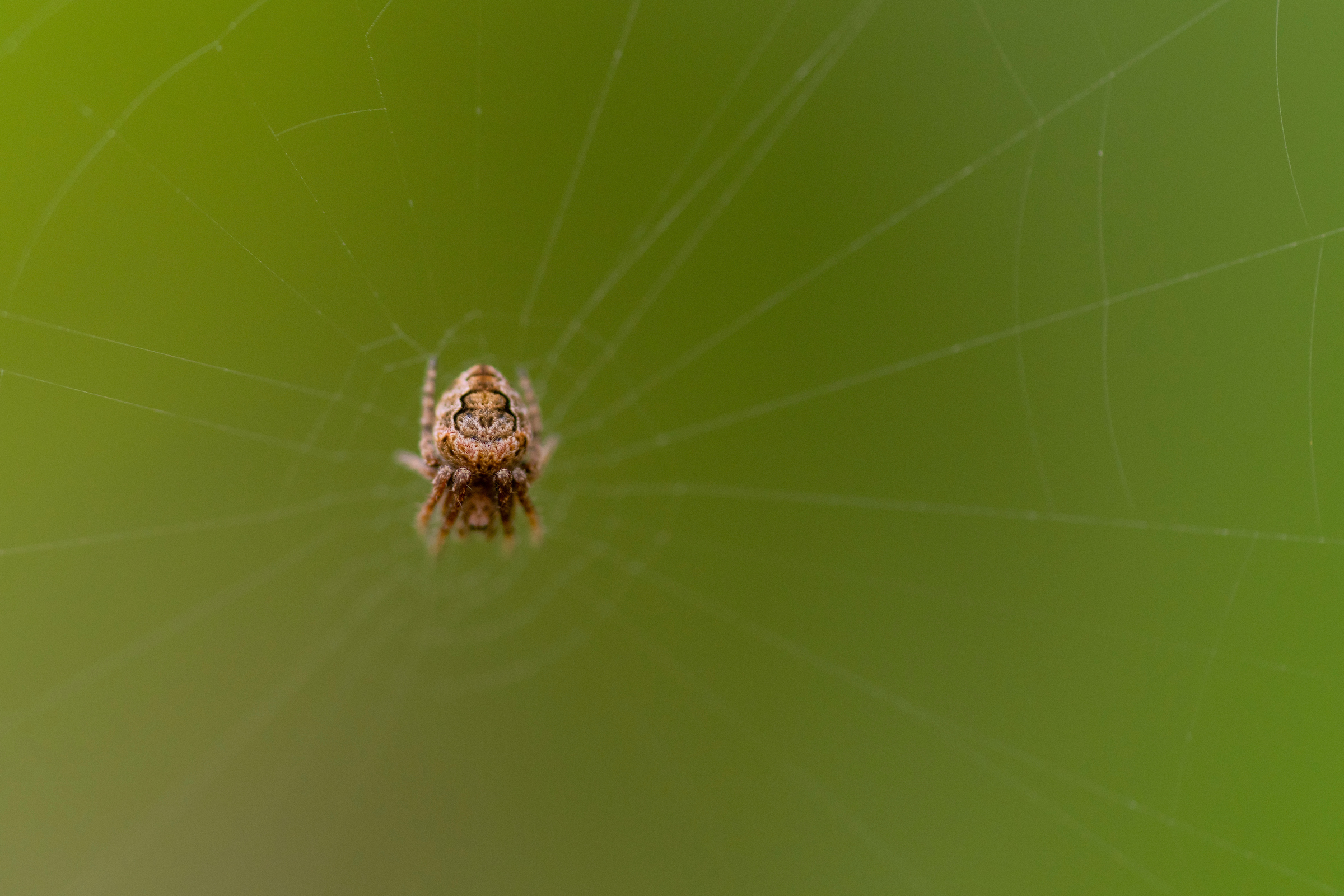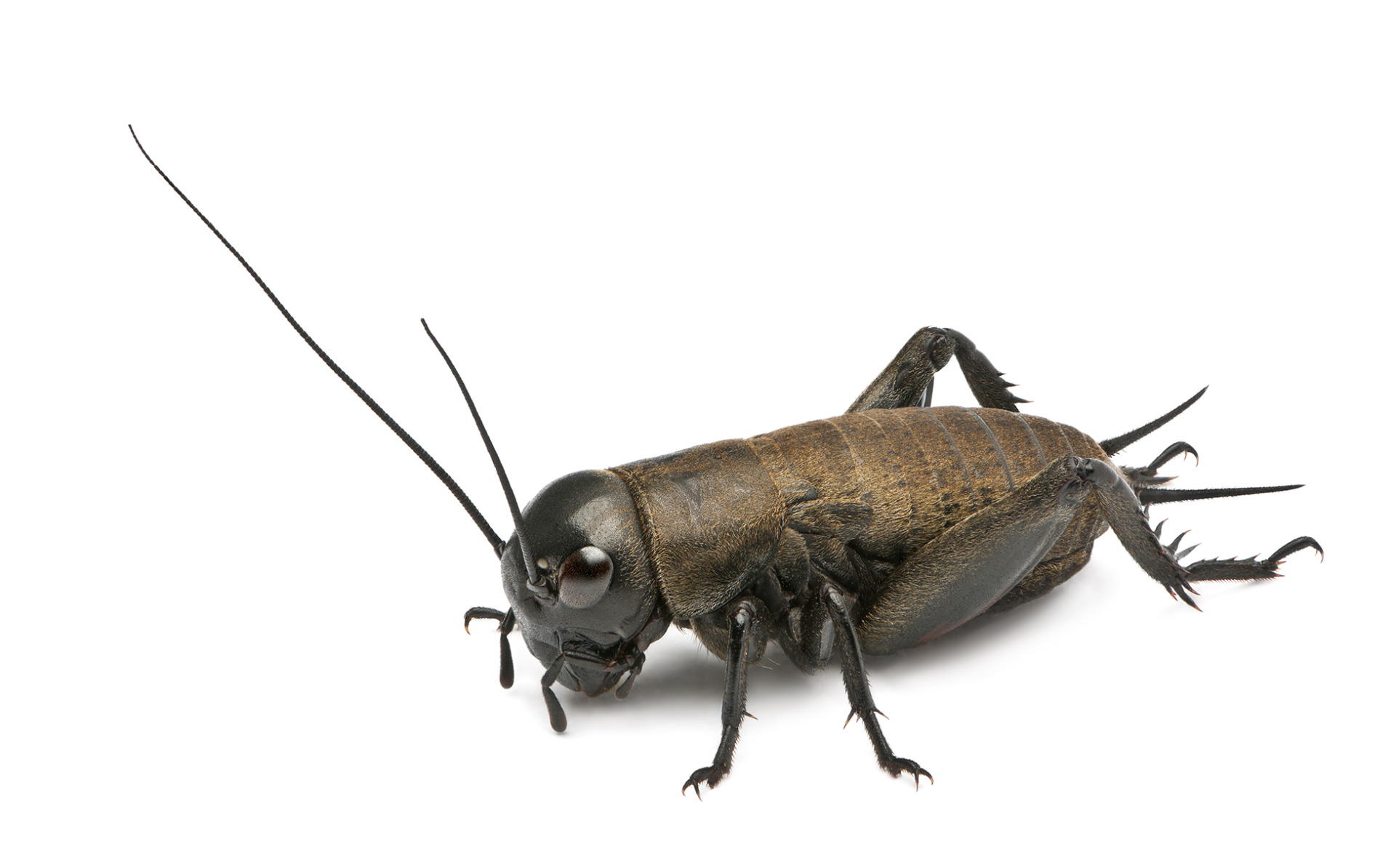Q&A: Tackling the red flour beetle
AgriLife Extension experts provide education, answers about invasive pest
Texas A&M AgriLife Extension Service entomologists Patrick Porter, Ph.D., and Robert Puckett, Ph.D., address some of the most frequently asked questions about the red flour beetle, commonly found in grain products and other food staples. The insect recently made headlines in Socorro in West Texas and in Levelland in the South Plains region in 2023.
Porter is an AgriLife Extension entomologist in Lubbock and professor in the Department of Entomology at the Texas A&M College of Agriculture and Life Sciences. He has a background in stored grain entomology and has worked with red flour beetle events in stored corn. He was part of the response team to the red flour beetle outbreak in Levelland in 2023 and worked in Socorro in August and October.

Puckett is an AgriLife Extension entomologist in College Station and associate professor in the Department of Entomology. Since 2008 upon the completion of his doctorate, his research has focused on a wide variety of urban insect pests. He was part of the successful management response to the red flour beetle in Levelland.
Porter and Puckett sat down with AgriLife Today to bring both of their perspectives together, urban and agricultural, to answer the most common questions about the red flour beetle.
What is the red flour beetle?
The red flour beetle is a small insect that is extremely common in grain products, lentils, rice, shelled nuts, beans, dried fruit and chiles, dried pet food, and milk chocolate, etc.
It’s more likely to be found on processed food than in whole food, however it can be found on both types of food. The beetle and its larvae prefer to feed on grain dust and milled cereal products, which is why it prefers processed food. It has a lower preference for whole kernels, which it cannot eat until the grains crack.
Is a red flour beetle infestation common?
Most of us have unknowingly brought red flour beetles home in infested grocery products. This is the usual path of entry and start of home infestations. Routine, common infestations in pantry products are discussed in this factsheet.
Red flour beetle infestations are not new. In fact, the beetles were found in a clay jar that once probably contained grains in a 2,500-year-old Egyptian Pharaohs’ tomb.
That being said, the current situation in and around El Paso County has a different source than routine home infestations. Rather than being an infestation started from inside the home, these beetles are coming into structures in large numbers from waste-crushed pecan shells.
Why is the beetle infesting pecan shells in West Texas?
Red flour beetles infest many types of stored products, and recent outbreaks have been associated with piles of stored almond shells, pecan shells and dried red chiles. Such commodities are excellent food sources, and when they are in piles or bins they are even better for the beetles. The piles provide shelter and a temperature gradient that allows the beetles to move to more comfortable places when they get either too hot or too cold. The piles also have a moisture gradient in them allowing the beetles to move to wetter areas and feed on higher moisture food when they need water. Piled commodities also provide protection from predators.
Red flour beetles take two to three months to develop from egg to larva to adult, depending on temperature. Adults live up to three years, and females lay as many as 1,000 eggs over eight months. Piles allow the beetles to reproduce generation after generation. In just a few months the piles can be teeming with beetles.
Why are there so many red flour beetles now in West Texas?
While it is not known for sure, we have developed a likely hypothesis. With an increase in pecan shelling in the El Paso area, more shells are being stored in piles. The pecan shells are used for landscaping material, dust control along roadways and other uses. When pecan shells are moved, as in for spreading on the landscape, a front-end loader may be used to fill the trucks that will haul them to the spreading site.
Many of them will fly away when the spreading process begins, and this explains the “flush” of beetles people observe when new shells are spread out on land. But some beetles remain in the spread shells and reproduce. Because spread shells are not as good at providing shelter and the temperature or water gradient, the reproductive rate of the beetles is not as high as in piles, but it is not zero. The populations in spread shells can continue to increase, and some will fly to neighboring houses once they have matured to adulthood.
Do I need to remove the pecan shells I spread for landscaping?
No. Infested shells that have been spread on the landscape can be treated with a pyrethroid insecticide, readily available at home and garden stores. It is important to get even coverage of the whole surface and use enough water to drive the insecticide several inches deep into the shells. Even if the insecticide does not go all the way to the soil surface, the beetles will still move around and encounter it. Such treatments might not kill all beetles, but they will go a long way toward reducing the number in spread shells. The insecticide label will discuss rates and safe application techniques.
Our separate list of exterior red flour beetle insecticides for use on homes is meant to present products that can be applied to the outside of structures and in a narrow band around them. It is not meant to suggest insecticides for application to pecan shells on the ground.
Is there a safe depth to spread pecan shells?
This question has not been addressed with any research, but there are some guidelines. With piled pecan shells, the deeper the layer of shells, the better the habitat for beetles. AgriLife Extension took hundreds of samples from pecan shells in the Socorro area in August and October, and without exception caught more beetles per unit of shells in places where those shells were piled deeper. Every sample taken had red flour beetles, but there were more where the shells were deeper.
Given this, we can state that a 2-inch layer of shells should support fewer beetles than a 6-inch layer. And a 6-inch layer should support fewer beetles than a 12-inch layer. The rule of thumb should be to use as thin a layer of shells as possible.
Can we spread pecan shells in the future?
Pecan shells provide benefits as dust control and mulch. The best solution is for the piles to be treated with insecticide as they are deposited at a shelling facility. This insecticide is an insect growth regulator that keeps insects from molting to the next life stage but is harmless to people and pets. Such treated shells will be essentially pest free on delivery and can be used in the landscape. Because the beetle’s reproductive potential is so much lower in shallow bands of spread shells than in piles of shells, we do not think they can reach high numbers in spread shells if those shells are clean on arrival. We are working with the pecan shellers now to explain how they can provide a pest-free product for local use. This problem is manageable if a few simple steps are taken as the shell piles are built.
Are the beetles coming from pecan orchards?
Red flour beetles cannot infest whole pecans in the field, they only infest pecans after they have been processed and the shells are piled up.
Can beetles infest and damage field crops?
The red flour beetle is a pest of stored commodities. It cannot thrive in the open air, and it poses zero risk to crops growing in the field.
How far can they fly?
Experiences during the red flour beetle outbreak in Levelland indicate that the beetles can fly more than 1.5 miles from the source piles. Although the infestation in Levelland was associated with almond hulls, the beetles have no difference in flight capability caused by the commodity on which they developed.
Do I have to throw away my food?
No, and this is a common misconception. Red flour beetles live and breed where there is a preferred food source. These sources include grain products, lentils, beans, rice, shelled nuts, dried fruit and chiles, dried pet food, and milk chocolate, etc. They do not intentionally infest meat, fresh fruits, vegetables, etc., and will not reproduce in these. If there are large numbers of beetles in the kitchen, then of course the occasional beetle might get on one of these items. The beetles do not harbor disease causing organisms. Wash the item with soap and/or water, as appropriate, and prepare it as you normally would.
Grain products, ground corn, dried fruit, etc. are another matter. Sealed packets should be fine, like in boxes of cereal that come with separate wrappers on the inside. Any product that is sealed inside a plastic container inside a box should be beetle-free, unless it came infested from the grocery store. But boxes without these plastic inner wrappers might be infested. Inspect these products before you use them.
Unsealed foods preferred by the beetles might be infested. One telltale sign would be a slight odor, the one characteristically given off by scent glands in the beetles. This chemical will also impart a foul taste to food. You can check many types of grains for beetles by placing them in a kitchen colander and shaking the contents vigorously. If beetles are present, they should fall through the holes and land on the countertop. Infested grain commodities should be discarded.
How do I minimize beetles coming in from outside?
There are several methods to minimize the number of beetles entering a home, and the list is too long to include here. Essentially, homeowners should reduce the avenues of beetle entry around the exterior of their homes. Common entry points include weep holes, vents — roof, attic and soffit, under doors with deteriorated door sweeps, and deteriorated window screens. Additionally, red flour beetles are attracted to lights, so limit the use of exterior lights in the near-home environment. More information is available in both English and Spanish fact sheets.
Contact insecticide application on the exterior perimeter of the structure can help decrease red flour beetle activity within the structure, but it will not resolve the activity until the source material has been properly treated or removed. During infestations such as the one in and around El Paso, people instinctively think that repeated applications of contact insecticides will solve the problem. This is false. It will kill many adult beetles that come into contact with the insecticide but will take days to do so after exposure. Meanwhile, other adult beetles will likely arrive from the source material. So, for the property owner, it will seem as though the insecticide is not working. The source material must be addressed for this localized red flour beetle infestation to be resolved.
What should I spray inside the house?
Insecticides for use indoors and outdoors are covered in English and Spanish fact sheets.
How often should I respray inside?
The insecticides used inside a home will remain effective for a month or more, depending on the product used. The problem is that, with a large number of beetles entering the home each night, it might look like you are not getting control. The reality is it might take 24-48 hours for insecticides to kill. In the meantime, most of them will remain active, so you might think the insecticides are no longer effective when you see live beetles every day. The insecticides are still effective, they just take time to work. Do not treat your home more than every few weeks; you will not improve beetle control, but you are adding a lot of unnecessary insecticide to the home environment. This is a case where more is not better, and more might be unhealthy.
Will they go away in winter?
Yes and no. Insects are cold-blooded, so their activity declines as the temperatures cool. Red flour beetles prefer temperatures in the 70s-80s, and move around a lot less when temperatures are below 60 degrees. Cooler temperatures will keep them from flying, but they might still be alive in the pecan shells. Temperatures below freezing will kill them, but the pecan shell layer provides some protection because it is a layer of insulation. Thin layers of pecan shells are poor insulation, so expect more beetle kill from freezing where the pecan shells are thinner. Deep layers of pecan shells will probably protect the beetles from freezing. In this case, the beetles might seem to go away in the winter, but those protected from freezing will likely be around to reproduce in the spring.





